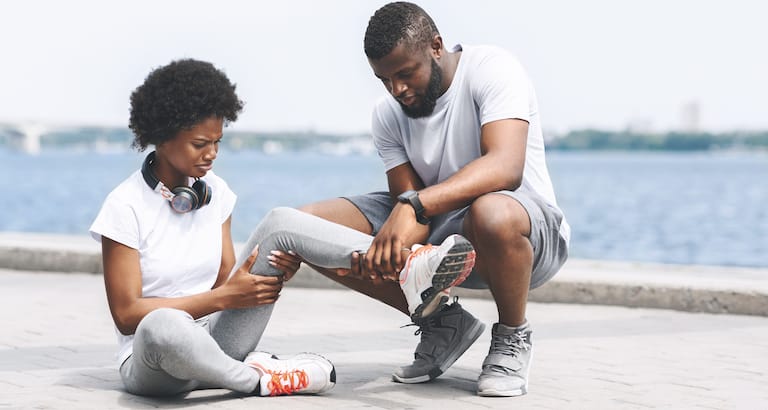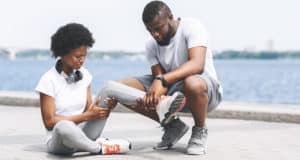Participating in sports and physical activities is essential for maintaining health and fitness, but injuries are an inevitable risk. Whether you’re a recreational enthusiast or a professional athlete, knowing how to administer immediate first aid can aid recovery and prevent complications.
This guide provides evidence-based strategies for managing common sports injuries, including updated treatment protocols and preventive measures to support a safe and effective recovery.
Common types of sports injuries
Sports injuries typically fall into two categories:
- Acute injuries: These occur suddenly during activity, such as sprains, fractures, or concussions.
- Chronic injuries: Resulting from repetitive overuse. Examples include stress fractures and tendinitis.
Familiarising yourself with these injury types enables prompt recognition and appropriate response.
Immediate first aid strategies
The evolving approach: beyond R.I.C.E.
Traditionally, the R.I.C.E. (Rest, Ice, Compression, Elevation) method was the cornerstone of acute injury management. However, recent insights suggest that while these steps can alleviate initial pain and swelling, they may not necessarily expedite healing. Current recommendations emphasise a more dynamic approach.
- Protection: Safeguard the injured area to prevent further harm.
- Optimal loading: Gradually introduce gentle movements to stimulate healing, avoiding complete immobilisation.
- Ice: Apply ice packs intermittently (20 minutes on, 20 minutes off) during the first 48 hours to manage pain and swelling.
- Compression: Use elastic bandages to provide support and reduce swelling.
- Elevation: Keep the injured limb elevated above heart level to minimize swelling.
This updated protocol, often referred to as P.O.L.I.C.E. (Protection, Optimal Loading, Ice, Compression, Elevation), encourages early mobilisation to promote faster recovery.
Specific first aid measures for common injuries.
Sprains and strains
- Immediate care: Implement the P.O.L.I.C.E. method.
- Follow-up: After the initial swelling subsides, engage in gentle stretching and strengthening exercises to restore function.
Concussions
- Immediate care: Remove the individual from the activity immediately. Monitor for symptoms like confusion, dizziness, or loss of consciousness.
- Follow-up: Seek medical evaluation promptly. Rest and gradual return to activity are essential, guided by healthcare professionals.
Fractures
- Immediate care: Immobilise the affected area using a splint or sling. Avoid attempting to realign the bone.
- Follow-up: Seek emergency medical attention for proper diagnosis and treatment.
Nosebleeds
- Immediate care: Have the person sit upright and lean slightly forward. Pinch the nostrils together for at least 10 minutes.
- Follow-up: If bleeding persists for more than 30 minutes, seek medical attention.
Preventive measures
Preventing sports injuries is preferable to treating them. Consider the following strategies:
- Proper warm-up and cool-down: Engage in dynamic stretches before activity and static stretches afterward to prepare muscles and prevent stiffness.
- Use appropriate gear: Wear sport-specific protective equipment that fits correctly.
- Stay hydrated: Maintain adequate fluid intake before, during, and after exercise to prevent cramps and heat-related illnesses.
- Gradual progression: Increase the intensity and duration of activities gradually to avoid overuse injuries.
- Listen to your body: Pay attention to any pain or fatigue you may experience. Rest or modify activities as needed to prevent exacerbating potential injuries.
Conclusion
Understanding and implementing effective first aid for sports injuries are crucial skills for athletes, coaches, and fitness enthusiasts. By staying informed about current best practices and emphasising prevention, individuals can enjoy sports safely and minimise the risk of injury.
Updated: April 2025










